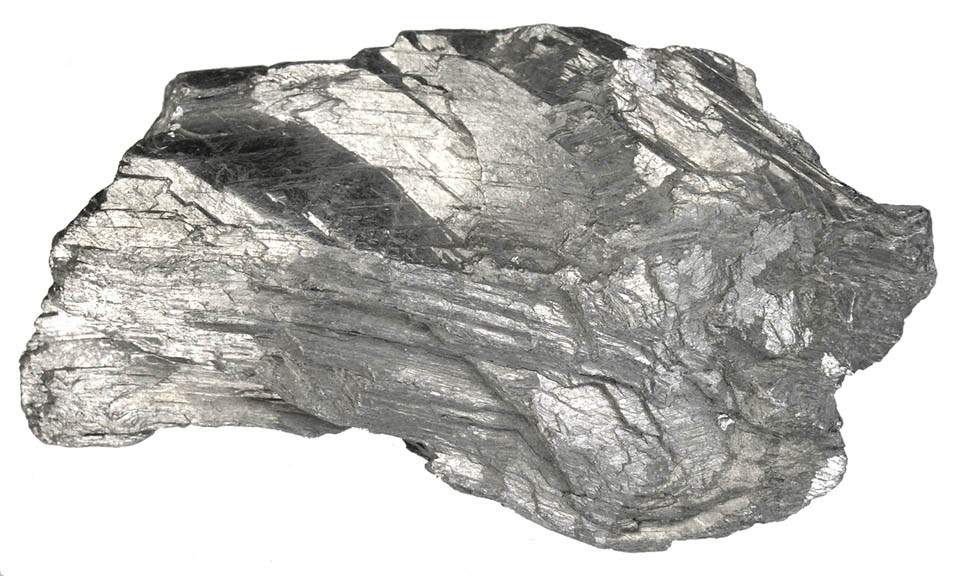
Most people have never heard of antimony. It may have a lustrous silver colour that eye-catchingly sparkles and glistens, but it is, nevertheless, far from a headline-grabbing commodity.
Antimony does, however, have two important uses: in flame retardants and lead-acid batteries. Because the former is driven by life-saving fire regulations, the commodity is considered strategic by several countries.
In fact, the European Union and the US have classified it as a critical raw material in recent years.
In light of this, it is hoped a new antimony roaster being built in Oman could help diversify supply of the metal away from China, which dominates mining and refining, especially as the ongoing trade war between the US and the Asian nation intensifies.
Outlook for antimony
China currently accounts for over 90% of antimony supply. However, this has been declining in recent years, due to older mines reaching the end of their life and a national movement to mitigate pollution in the country, which has caused plant closures.
Far from affecting the market, reduced supply has actually coincided with a plateau in demand and price.
Nils Backeberg, senior analyst in metals and technology materials at Roskill Information Services, explains that in 2011, the price of antimony spiked, but due to an overall decline in consumption, the price decayed slightly before experiencing an uptick in 2016 when hit around $8,000 per ton. It has since remained around this price.
“In both the two main markets for antimony there has been a decline in consumption, which has gone hand-in-hand with a not very exciting price,” says Backeberg.
The decline is due, in part, to a trend for replacing antimony with tin in new lead-acid batteries, as well as some changes in flame retardant regulation that has shifted the industry away from antimony. However, the commodity is still generally considered to be the most cost-effective and best performing fire retardant product on the market.
Therefore, where there is a drive to increase fire safety there is a potential increase in demand. As such, Backeberg predicts a 2% growth in the market moving forward.
Beyond China
Once mined, antimony ore needs to be processed into metal ingots, which are then used to produce antimony trioxide for flame retardants. This entire processing capacity is predominantly located in China.
However, the new roaster plant being built in Oman, according to the company in charge of the project, Strategic and Precious Metal Processing (SPMP), will have a capacity of 20,000 tonnes of antimony and gold per year in combined metal products. This represents approximately 12% of the average annual world antimony production over the past five years, according to SPMP.
The project, which is said to be the first antimony roaster to be built outside of China in the last 30 years, is 40% owned by TriStar (through its stake in SPMP), DNR Industries, which is part of Dubai-based Dutco Group (20%), and the Oman Investment Fund (OIF), a sovereign wealth fund of the Sultanate of Oman (40%).
While Backeberg doesn’t think the project is going to ‘rock the boat’ for the antimony market because it is only an intermediary step, it does, however, offer a significant supply of non-Chinese antimony products.
“The problem is it needs to find supply for the roaster to operate,” says Backeberg.
“Up until now the project has not secured consistent feed stock to keep it going; though it has some available, it is as yet unclear where the long-term supply will come from,” he adds.
There are around 140 antimony projects across the globe, according to TriStar-sponsored Antimony World map. Nevertheless, the most significant producers – Russia, Australia and Tajikistan – send their ore straight to China.
Polyus’ Olimpiada mine in Russia, for example, which produces antimony as a by-product, supplies around 20,000 tons of the ore to China, according to Backeberg.
“It is that capacity that TriStar is looking to compete for,” he adds.
Space to operate
However, John Meyer, a partner at SP Angel, which acts as nominated advisor and broker to Tri-Star Resources, notes that there are above ground stocks of gold with antimony, which should be suitable for processing. Producers around the world will likely make supply available when required to diversify their sales, he says.
“TriStar’s Oman plant would normally have the potential to disrupt the antimony market but plant closures in China in recent years may create sufficient space for TriStar’s new antimony production,” he adds.
“Tristar has always planned to bring new antimony production relatively slowly to avoid much market disruption.”
Furthermore, an increasing worldwide focus on the traceability and environmental sustainability of raw materials may provide Oman-sourced antimony supply a “distinctive opportunity to establish a unique identity within the supply chain,” says Meyer.
The plant is being built with superior environmental performance, according to SPMP.
Based on a long-term antimony price of $8,500 a ton, the company estimates that the net present value of the project is around $279m.
Future outlook
Although mining antimony is cheaper in China because of labour costs and the typically large deposits, the trend in declining production is set to endure.
“China’s Green Shied strategy should continue to restrict antimony processing and mine supply as its government continues to clean up the environmental damage done in recent years,” says Meyer.
However, for the overall market, Russian supply will probably mitigate China’s decline, says Backeberg; both he and Meyer expect the market for antimony to remain stable with some growth.
“There will be spikes and volatility, and we will see short-term shifts in the market,” says Backeberg. “However, there is more than enough to go around and to keep pace with the processing capacity, so expect the market to remain relatively stable.”



